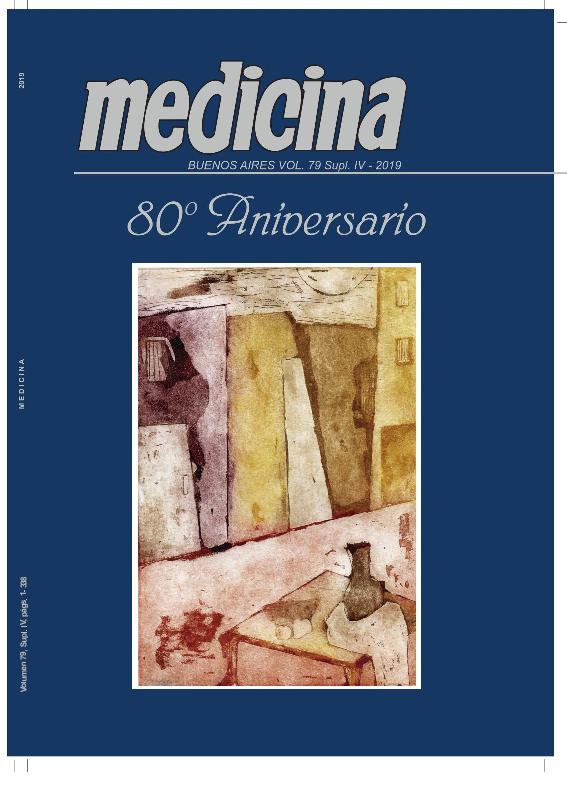Evento
Histological demonstration of apoptosis activation in the liver fluke (Fasciola hepatica) following Closantel treatment of experimentally-infected sheep
Scarcella, Silvana Andrea ; Solana, María Victoria
; Solana, María Victoria ; Bianco, Florencia; Solana, Hugo Daniel; Lombardo, Daniel Marcelo
; Bianco, Florencia; Solana, Hugo Daniel; Lombardo, Daniel Marcelo
 ; Solana, María Victoria
; Solana, María Victoria ; Bianco, Florencia; Solana, Hugo Daniel; Lombardo, Daniel Marcelo
; Bianco, Florencia; Solana, Hugo Daniel; Lombardo, Daniel Marcelo
Tipo del evento:
Reunión
Nombre del evento:
LXIV Reunión Anual de la Sociedad Argentina de Investigación Clínica; LI Reunión Anual de la Asociación Argentina de Farmacología Experimental; XXI Reunión Anual de la Sociedad Argentina de Biología; XXXI Reunión Anual de la Sociedad Argentina de Protozoología; IX Reunión Anual de la Asociación Argentina de Nanomedicinas y VI Reunión Científica Regional de la Asociación Argentina de Ciencia y Tecnología de Animales de Laboratorio
Fecha del evento:
13/11/2019
Institución Organizadora:
Sociedad Argentina de Investigación Clínica;
Asociación Argentina de Farmacología Experimental;
Sociedad Argentina de Biología;
Sociedad Argentina de Protozoología;
Asociación Argentina de Nanomedicinas;
Asociación Argentina de Ciencia y Tecnología de Animales de Laboratorio;
Título de la revista:
Medicina (Buenos Aires)
Editorial:
Fundación Revista Medicina
ISSN:
1669-9106
Idioma:
Inglés
Clasificación temática:
Resumen
The apoptosis can be by DNA damage, cytokine expression, etc. The study of apoptosis has application for the understanding of biological events, such as the tumorogenesis,the action mechanism to drugs, etc. For the apoptosis detection in differentcell lines and tissues there are methods such as TdT-mediated dUDP nick endlabelling (TUNEL) or directly the immunolocalization of Caspase-3. Closantel is an antiparasitic halogenated salicilanilide for the treatment of Fasciola hepatica infestation in farm animals. Its action mechanism is not fully known. It´s known decouple the oxidative phosphorylation but the probable degree of contribution of apoptosis. In this work, were used the Caspase-3 detection and TUNEL techniques to assess the probable involvement of the closantel in the generation of apoptosis in Fasciola hepatica. Fourteen lambs were infected orally with 200 metacercariae of Fasciola hepatica. At 16 weeks post-infection, 10 lambs were treated orally with closantel (10mg/kg.). Adult flukes were recovered from the liver of individual lambs at 0h (notreated n:4), 24h (n:5) and 36h (n:5) post treatment. The flukes were processed for usual histological analysis. There were no injuries at the controls. The F. hepatica at 24 h PT showed minor damage to the posterior end of syncytium. Those of 36 h PT lost large areas of the syncytium in the posterior and dorsal end with cell depletion in testis and vitelline follicles and the oocytes appear rounded with condensed cytoplasm, indicating apoptosis. In testis, ovary and vitelline follicles, defects in closantel-treated trematodes were aligned with failure inthe energy-demanding processes of mitosis and differentiation. These changes could be attributed to anthelmintic-induced blockage of intermediary metabolismand neuromuscular paralysis. This work confirm that closantel activates apoptosis being too this phenomenon its mechanism of action.
Palabras clave:
FASCIOLA HEPATICA
,
CLOSANTEL
,
APOPTOSIS
Archivos asociados
Licencia
Identificadores
Colecciones
Eventos(CIVETAN)
Eventos de CENTRO DE INVESTIGACION VETERINARIA DE TANDIL
Eventos de CENTRO DE INVESTIGACION VETERINARIA DE TANDIL
Citación
Histological demonstration of apoptosis activation in the liver fluke (Fasciola hepatica) following Closantel treatment of experimentally-infected sheep; LXIV Reunión Anual de la Sociedad Argentina de Investigación Clínica; LI Reunión Anual de la Asociación Argentina de Farmacología Experimental; XXI Reunión Anual de la Sociedad Argentina de Biología; XXXI Reunión Anual de la Sociedad Argentina de Protozoología; IX Reunión Anual de la Asociación Argentina de Nanomedicinas y VI Reunión Científica Regional de la Asociación Argentina de Ciencia y Tecnología de Animales de Laboratorio; Mar del PLata; Argentina; 2019; 186-186
Compartir



